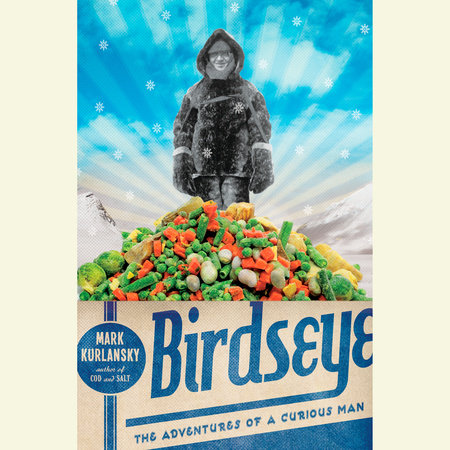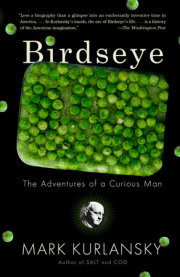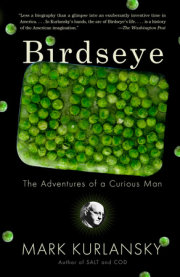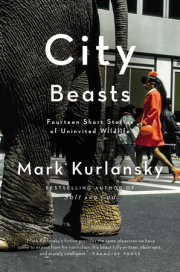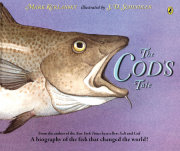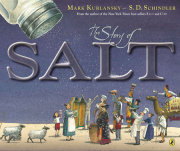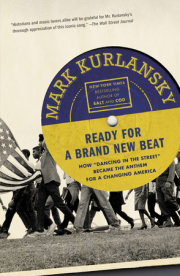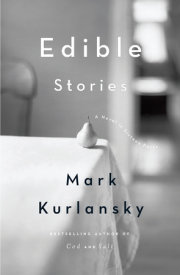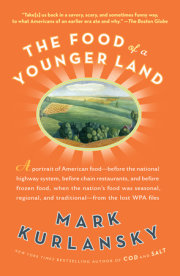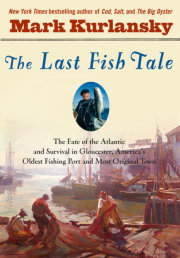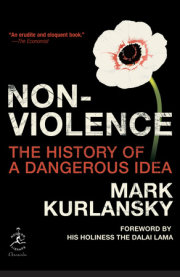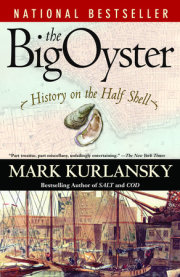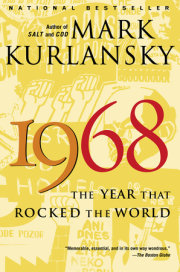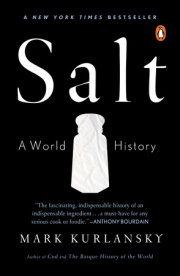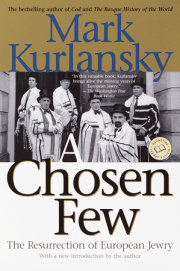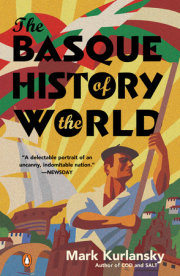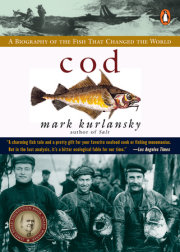Chapter 1
A Nineteenth-Century Man
Clarence Frank Birdseye II was born in Brooklyn on December 9, 1886. Both the year and the place are significant. In 1886, Brooklyn was a separate city from Manhattan and, in fact, was the third-largest city in America and one of the fastest growing. Between 1880 and 1890 the population grew by more than a third to 806,343 people.
One of the forces that made this dramatic growth possible in Brooklyn and neighboring Manhattan was refrigeration. Because of this new technology a large population could live in an area that produced no food but rather brought it in and stored it. Natural ice, collected in large blocks from the frozen lakes of New England and upstate New York, was stored in sawdust-insulated icehouses built along the Hudson that shipped all year long. New York City used more than one million tons of natural ice every year for food and drink. While the pleasure of iced drinks in the summer had been a luxury of the wealthy ever since Roman times, in New York at the time of Birdseye’s birth it had become commonplace. Almost half of all New Yorkers, Manhattanites and Brooklynites, kept food in their homes in iceboxes—insulated boxes chilled by blocks of natural ice. A few even had artificially chilled refrigerators, dangerous, clumsy electric machines with unpredictable motors and leaking fluids.
No place else in the world was using this much ice. Birdseye was born into a world of refrigeration and would find it lacking when he left the New York City area. It was one of those things that New Yorkers took for granted.
People are mostly formed over their first dozen years; Birdseye, having been born in 1886, was a nineteenth-century man, even though he lived most of his life in the twentieth century. This, of course, was not unusual. For the first half of the twentieth century, people shaped in the nineteenth century dominated most fields. John Kennedy, elected in 1960, was the first twentieth-century U.S. president. Historians have often commented on how historical centuries do not fit neatly between year 1 and year 99, and quite a few have thought the historical nineteenth century to be an unusually long one, lingering well into the twentieth, whereas the twentieth century to some appears to have been a short one, transitioning even before the year 2000 into a new age that would be associated with the twenty-first century.
Clearly, Birdseye was shaped by the nineteenth century. Even as an inventor, he used nineteenth-century industrial technology for nineteenth-century goals, as opposed to someone like his fellow Gloucester inventor John Hays Hammond, who harnessed radio impulses into such devices as remote control and was very much a twentieth-century inventor. Birdseye’s inventions, from freezers to lightbulbs, were all mechanical and never electronic. Yet his impact on how people lived in the twentieth century was enormous.
The nineteenth century, the time of the Industrial Revolution, was an age of inventions, and inventors were iconic heroes. Ten years before Birdseye’s birth, Alexander Graham Bell had invented the telephone. The following year Thomas Edison invented the phonograph. The year after that, 1878, Sir Joseph Wilson Swan, a British inventor, patented the first incandescent lightbulb and lit his house with it. The year before Birdseye was born, a German engineer named Karl Benz patented the first automobile that was practical to use, a three-wheeled vehicle powered by an internal combustion engine and fueled by periodically filling a tank with gasoline. The same year another German, Gottlieb Daimler, built the first gas-powered motorcycle. In 1886, the year of Birdseye’s birth, Daimler built the first four-wheeled automobile.
Among the important inventors at the time of his birth, George Eastman was to have a profound effect on Birdseye. In 1884 he patented roll film, and in 1888 he produced a lightweight camera using that roll film, the Kodak camera. He and his company, the Eastman Kodak Company, the first major supplier of photographic equipment, gave birth to amateur photography, a passion of the young Clarence Birdseye. His was the first generation to grow up with amateur photography, and he was a pioneer—from his snapshots in the early twentieth century to home movies in the 1920s to color film in the 1930s.
Inventions of all kinds, ingenious mechanical solutions to practical problems, were popping up seemingly every day. In 1884 the synthetic cloth industry began when a French chemist, Louis-Marie-Hilaire Bernigaud, comte de Chardonnet, patented a process to make artificial silk, which decades later became known as rayon. In 1884, Lewis Waterman, a Brooklyn insurance agent, frustrated with the inefficient pens of the day, invented the capillary feeding fountain pen, the first practical alternative to a pen dipped in an inkwell. James Ritty, an Ohio barkeeper, became the first manufacturer of his new invention, cash registers, the same year. In 1885, Hiram Maxim, an American inventor, demonstrated the first machine gun to the British army. In 1886, in addition to Daimler’s automobile, Coca-Cola and the first washing machine were invented. Barbed wire, which divided up the open range and changed the character of the American West, and wearable contact lenses were both patented the following year. In 1888, Marvin Stone, an Ohio-born inventor, came out with the first paper drinking straw. In 1889, Joshua Pusey, a cigar-smoking Pennsylvania attorney, invented the matchbook. In 1891, when Birdseye was four years old, Jesse Reno, the son of the Civil War officer after whom the Nevada city was named, invented the escalator. Typical of his generation of inventors, he was part inventor and part entrepreneur. Reno created a sensation in Birdseye’s native Brooklyn when he showcased the escalator for two weeks as a ride at the Coney Island amusement park. It was then featured on the Manhattan side of the Brooklyn Bridge, still in itself a sensation since its 1883 opening as the longest suspension bridge in the world, for the first time connecting Brooklyn and Manhattan.
New York City was being reshaped. The Statue of Liberty was installed in the harbor and dedicated the year of Birdseye’s birth. Eight years later the city began digging tunnels for subways.
These were exciting times in New York and in America. In the nineteenth century there was a notable difference between the culture of American inventors and that of Europeans. European inventors reveled in the theoretical, sometimes even shunning patents lest they give the impression of harboring lowbrow commercial interests, whereas Americans thought inventions were pointless without practical and commercial applications. There were of course exceptions. Daimler, who was an engineer and not a scientist, did start producing automobiles, and Chardonnet, who was a scientist and a colleague of Louis Pasteur’s, did start a synthetic textile mill. But many Europeans were content in the world of the theoretical, whereas Americans had a Puritan belief that anyone who invented something had a moral obligation to put it to useful service. The press would criticize inventors who failed to do this.
Dr. John Gorrie ran a naval hospital in Apalachicola, Florida, that treated victims of yellow fever and malaria. He invented a primitive form of air-conditioning in the 1840s that produced artificial ice by expanding compressed air. Modern air-conditioning was not developed until sixty years later at the beginning of the twentieth century. Gorrie cooled his hospital and his home with the device, but he was so attacked by religious conservatives for interfering with God’s design that he published the ideas behind his invention under a pseudonym. Not realizing who the writer was, the editor of the publication, the Commercial Advertiser, criticized the author for having failed to put his ideas into service.
Robert Fulton, the father of the steamboat, was a prototypical American inventor. The steamboat had had a long development, which had nothing to do with Fulton. It was a European idea, as was the steam engine. A Frenchman, Denis Papin, built a steam piston in 1690 and a steamboat in 1704 but failed to attract any interest in the boat. The Scottish engineer James Watt built a greatly improved steam engine at the time of the American Revolution. But although the French, the Germans, the British, and then the Americans built various steam-powered vessels, there was no commercially successful steamboat until Robert Fulton. The great inventor Robert Fulton did not exactly “invent” anything. But he put the right kind of engine in the right kind of vessel and established a commercial run on the right route. Earlier steamboat lines were on less profitable routes or ones with good alternative land transportation. Fulton established his line on the East River in Manhattan running up the Hudson to Albany. It was the first commercially successful steamboat line in part because there was no good land route for hauling freight between these two commercially important centers. Fulton is often erroneously remembered today as the inventor of steamboats—in much the same way that Birdseye is erroneously remembered as the inventor of fast freezing—but the real reason we still know the name Fulton is that he launched an industry by showing that money could be made from steamboats and that it was a commercially important idea. In America an important idea is an idea that makes money.
Europeans did not always like the American attitude. Albert Einstein, essentially a nineteenth-century European scientist and pure theoretician who found himself in twentieth-century America, wrote of this pragmatic side of American thinking, “There is visible in this process of relatively fruitless but heroic endeavors a systematic trend of development, namely, an increasing skepticism concerning every attempt by means of pure thought to learn something about the ‘objective world,’ about the world of ‘things’ in contrast to the world of mere ‘concepts and ideas.’ ”
Birdseye grew up in a world in which mere concepts and ideas were not enough. An American inventor solved a problem, formed a company, and, he hoped, earned a fortune. Alexander Graham Bell, a Scot turned Canadian who then came to America, was most known at the time of Birdseye’s birth as not only the inventor of the telephone but the founder of the first telephone company, Bell Telephone, in 1877. By the time Birdseye was born, the Bell Telephone Company had placed phones in 150,000 homes and offices.
Copyright © 2012 by Mark Kurlansky. All rights reserved. No part of this excerpt may be reproduced or reprinted without permission in writing from the publisher.

